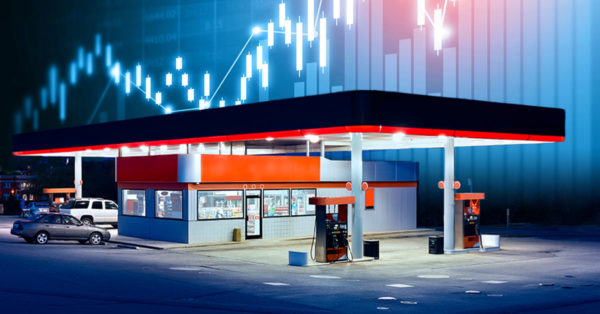Between inflation, volatile oil prices, a finicky labor market, and the rise of electronic vehicles, the current economic outlook for C-stores (convenience stores) is a mixed bag.
Recent data from the U.S. Bureau of Economic Analysis shows that consumers have cut their spending on gasoline and other energy goods by more than $10 billion. And 60% of consumers are planning to cut back on discretionary spending overall due to factors like layoffs, rising housing costs, and inflation.
Even as these factors may cut into C-stores’ sales, costs continue to rise. Although we may see some relief in this area in the coming months, the cost of labor has never been higher. And retailers aren’t immune to the effects of inflation, either.
Meanwhile, predictions about the cost of oil range from under $70 to over $100 per barrel over the course of 2023—making revenue difficult to forecast.
What can C-stores do to protect your profit margins in these uncertain circumstances? Advances in technology can both increase revenue and decrease operating costs.
Becoming Shoppers’ Destination of Choice
With the acceleration of digital self-service options during the pandemic, consumers have become increasingly motivated by convenience. But labor shortages and low inventory make it difficult to provide a smooth experience for shoppers. As a result, C-stores’ Net Promoter Scores (NPS) are down an average of 45% year-over-year.
Let’s look at a few front-of-house technologies that can boost your appeal to customers.
- Time-saving checkout options. In the past year, scan-and-go or self-checkout options have doubled in their impact on customers’ shopping destinations.
- Mobile apps. Apps can provide your customers with both the convenience of online ordering and the rewards of a loyalty program. According to Forrester, 53% of B2C decision-makers plan to increase spending on loyalty programs in 2023—and 90% of customers are likely to buy more from brands that understand their shopping habits.
- Robotic technology for cleaning. A startling 99% of US customers say they would not return to a store they perceive as unclean. Using robots to keep your store spick-and-span also frees your employees to spend more time directly serving customers.
How Digital Transformation Reduces Operational Costs
While front-of-house technologies do have the added benefit of reducing labor costs, the greatest overhead costs savings come from back-office digital transformation.
Consider how automating these processes reduces your staff’s manual processes and compensate for labor shortages.
- Store paperwork. Many stores still need to mail physical documents to a home office, where employees have time-intensive manual filing processes. Others upload documents to a shared drive. Automation can take this a step further— automatically filing paperwork and notifying people downstream in the workflow that documents have been added.
- Human Resources. Reduce the tedious tasks in HR by capturing and routing applications, automating alerts for hiring managers, tracking benefits enrollment, and more.
- Finance. Conquer the chaos of non-trade vendor invoice processing. Integrate with your ERP, and intelligent automation of Accounts Payable and Expense Reports allows for automatic invoice capture, routing notifications, GL coding, and more.
- Licensing and permits. If you’ve ever had a store miss the deadline to renew their liquor license, you know that’s a costly mistake. Automating this and similar applications reduces the risk of human error and lost revenue.
Watch the video to learn more about C-store trends and how MCCi can help with your automation project.
About MCCi
We are a business automation company that accelerates digital transformation and frees you from manual business processes. Read about the services we provide to C-stores or fill out the form below to talk to us today!


